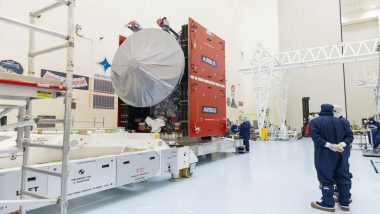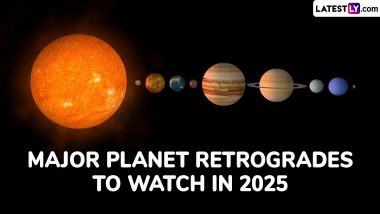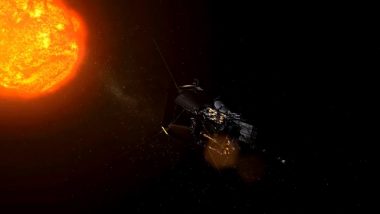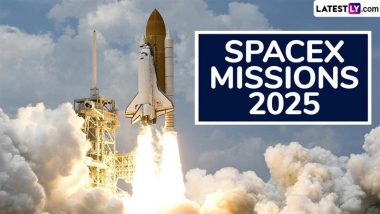New Delhi, September 30: NASA’s Europa Clipper mission, scheduled for journey to Jupiter and its moon Europa, is “fuelled up and nearly ready to go” on October 10. Europa Clipper is set to launch its first mission to conduct a detailed science investigation of Jupiter's moon Europa aboard SpaceX’s Falcon Heavy rocket from NASA Kennedy’s Launch Complex 39A. According to scientists, Europa has a salty ocean beneath its icy crust that could hold the building blocks necessary to sustain life.
“Fueled up and nearly ready to go! Technicians at @NASAKennedy have loaded the propellant and oxidizer that will flow to our spacecraft's array of 24 engines as we explore Jupiter's enigmatic moon Europa. The launch period opens on October 10!”, NASA said in a post on X. Europa Clipper is slated to travel 2.6 billion kilometres to reach the Jupiter system, where it will arrive in 2030. During its journey to Jupiter, it will make a flyby of Mars in February 2025, and then of Earth in December 2026. NASA-SpaceX To Launch Crew 9 Mission Today To Bring Back Sunita Williams and Butch Wilmore from ISS in February 2025.
Europa Clipper Mission to Jupiter Ready for Launched on October 10
Fueled up and nearly ready to go! ⛽️ Technicians at @NASAKennedy have loaded the propellant and oxidizer that will flow to our spacecraft's array of 24 engines as we explore Jupiter's enigmatic moon Europa. The launch period opens on Oct. 10! https://t.co/JfojOvzrl1 pic.twitter.com/dgohwli053
— NASA Europa Clipper (@EuropaClipper) September 25, 2024
NASA’s Europa Clipper Mission
Jupiter’s enigmatic ocean moon Europa is one of the most compelling destinations in the solar system. Next month, we set sail to explore it – and we hope you’ll ride along with us. The launch period opens Oct. 10: https://t.co/KX1yfEbQD2 #EuropaClipper pic.twitter.com/TLI0VuGGM7
— NASA Europa Clipper (@EuropaClipper) September 27, 2024
The spacecraft will use the gravity of each planet to increase its momentum, and with the help of these “gravity assists”, it will achieve the velocity needed to reach Jupiter in April 2030. Its main science goal is to determine whether there are places below the surface of Jupiter’s icy moon, Europa, that could support life. The team aims to understand the nature of the ice shell and the ocean beneath it, along with the moon’s composition and geology. The spacecraft will orbit Jupiter and fly by Europa about 50 times. It will log another 800,000 kilometres while a suite of science instruments gathers data on the subsurface ocean, the ice crust, and the moon's atmosphere. NASA-SpaceX Crew-9 Mission to ISS, Aim To Bring NASA Astronaut Sunita Williams, Butch Wilmore Back in February 2025.
The findings will help scientists better understand the astrobiological potential for habitable worlds beyond our planet. Europa Clipper’s propulsion module is an aluminium cylinder 3 metres long and 1.5 metres wide. It holds 24 engines and 2,752.2 kilograms of propellant in two propulsion tanks, as well as the spacecraft’s helium pressurant tanks.
(The above story first appeared on LatestLY on Sep 30, 2024 01:56 PM IST. For more news and updates on politics, world, sports, entertainment and lifestyle, log on to our website latestly.com).













 Quickly
Quickly




















